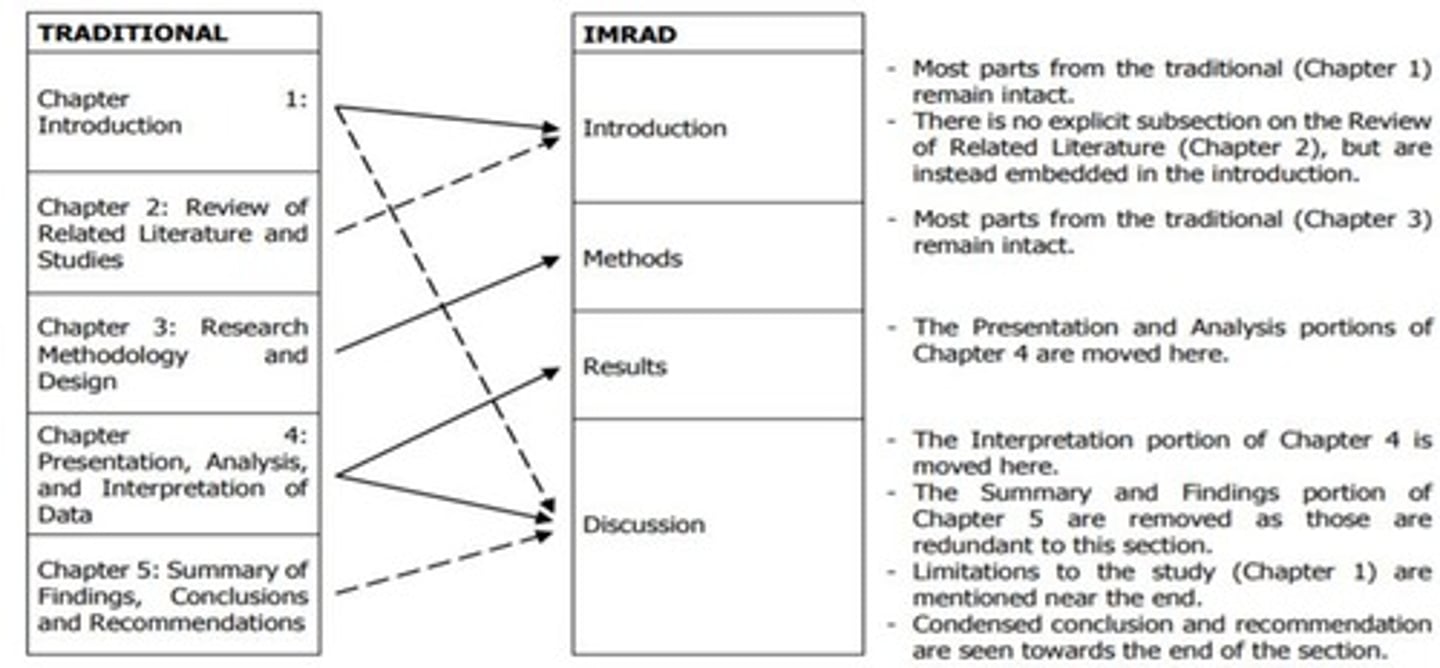Introduction to Research for Practical Research 1
1/39
There's no tags or description
Looks like no tags are added yet.
Name | Mastery | Learn | Test | Matching | Spaced |
|---|
No study sessions yet.
40 Terms
Research
Research is a systematic process of collecting, analyzing, and interpreting information to solve problems or answer questions.
Inquiry
Inquiry requires asking a question or problem.
Accuracy
Ensuring data collected from a survey is recorded precisely without errors.
Objectivity
Reporting survey results without personal bias.
Clarity
Using straightforward language in a research report.
Timeliness
Conducting research with updated content and information.
Systematic
Following a detailed research plan and its intended structure properly.
Relevance
Studying a new teaching method to improve education (The study must be useful).
Honesty
Truthfully presenting data without manipulation.
Integrity
Keeping promises regarding research publication timelines.
Carefulness
Double-checking data entries to prevent errors.
Openness
Sharing research findings with peers for feedback.
Respect for Intellectual Property
Citing all sources used in the research.
Confidentiality
Protecting participant identities in a study.
Responsible Publication
Publishing findings that contribute to scientific knowledge.
Responsible Mentoring
Guiding students through the research process ethically.
Respect for Colleagues
Collaborating with peers respectfully.
Non-Discrimination
Providing equal opportunities in research participation.
Social Responsibility
Conducting research that benefits society.
Competence
Continuously improving research skills.
Legality
Adhering to laws regarding data collection.
Animal Care
Ensuring humane treatment of animals in research.
Honesty
Ethical: Accurately reporting research data. Unethical: Falsifying results to support a hypothesis.
Objectivity
Ethical: Analyzing data without letting personal beliefs influence conclusions. Unethical: Manipulating data to fit a desired outcome.
Integrity
Ethical: Adhering to agreed deadlines for submitting research findings. Unethical: Plagiarizing another researcher's work.
Carefulness
Ethical: Double-checking all data entries for accuracy. Unethical: Rushing through analysis, leading to errors.
Openness
Ethical: Sharing data and methods for peer review. Unethical: Withholding crucial data from the scientific community.
Respect for Intellectual Property
Ethical: Citing all sources used in research. Unethical: Using someone's work without proper attribution.
Confidentiality
Ethical: Keeping participant data private and secure. Unethical: Sharing confidential information without consent.
Responsible Publication
Ethical: Publishing to contribute to scientific knowledge. Unethical: Publishing the same research in multiple journals to increase publication count.
Responsible Mentoring
Ethical: Providing constructive feedback to students. Unethical: Ignoring a student's request for guidance on research ethics.
Respect for Colleagues
Ethical: Collaborating respectfully with fellow researchers. Unethical: Sabotaging a colleague's work for personal gain.
Non-Discrimination
Ethical: Offering equal research opportunities to all qualified individuals. Unethical: Excluding participants based on race or gender.
Social Responsibility
Ethical: Conducting research that benefits society. Unethical: Performing research that could harm the public without mitigation.
Competence
Ethical: Continuously improving skills relevant to the research. Unethical: Conducting research without sufficient expertise.
Legality
Ethical: Following laws regarding data privacy. Unethical: Ignoring legal requirements for conducting research.
Animal Care
Ethical: Ensuring humane treatment of animals in research. Unethical: Conducting unnecessary or cruel animal experiments.
Human Subjects Protection
Ethical: Obtaining informed consent and minimizing risks. Unethical: Conducting experiments on humans without their knowledge or consent.
IMRaD Structure
Introduction: States the research problem. Methodology: Describes the research process. Results: Presents the findings. Discussion: Interprets the results.

Traditional Structure
Introduction: Background and objectives. Review of Related Literature & Studies: Existing research. Research Methodology & Design: Research methods. Presentation, Analysis, & Interpretation of data: Findings & result. Summary of Findings, Conclusion, & Recommendation: Implications and summary.